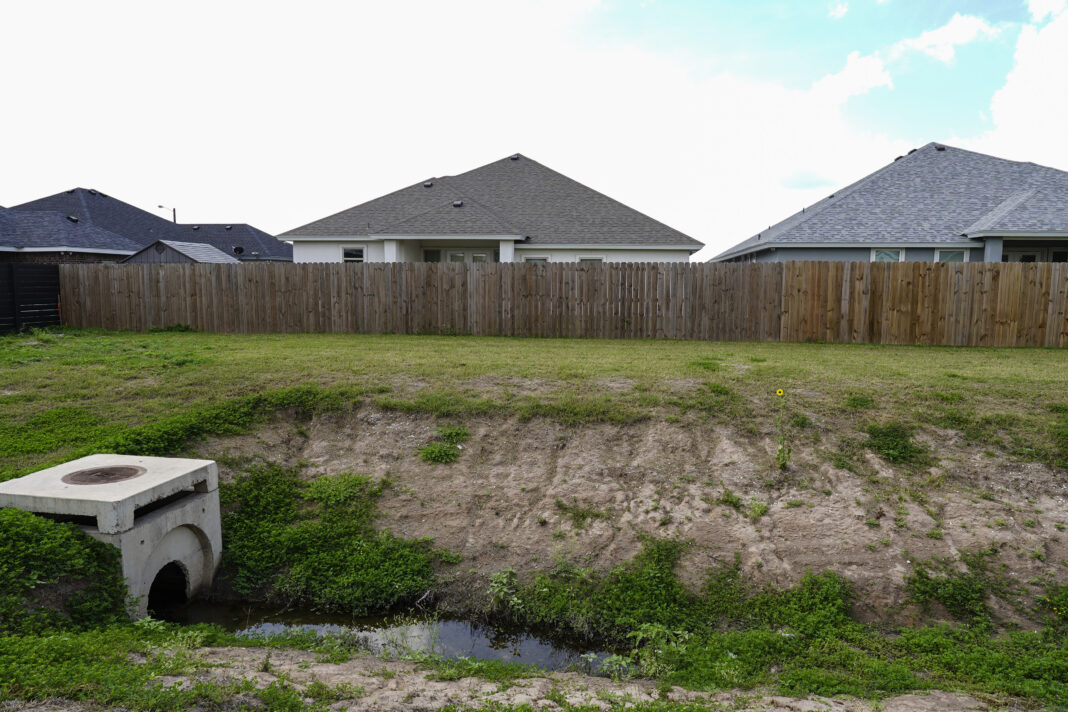HARLINGEN — Developers are facing tougher new drainage standards aimed at curbing flooding in their new subdivisions.
Earlier this week, city commissioners unanimously agreed to require developers build their new subdivisions to protect homes from bigger storms.
Meanwhile, they’re considering setting impact fees to help developers offset the cost of building subdivision flood-control measures such as detention ponds.
During a meeting, commissioners agreed to revise an ordinance upgrading the city’s Subdivision Development Guide’s standards to protect homes from so-called 50-year storms, or storms with a one in 50 or 2 percent chance of occurring during any year.
“The main purpose of this new guide is to minimize flooding as much as possible for new subdivisions,” Xavier Cervantes, the city’s planning director, told commissioners during Wednesday’s meeting. “The guide sets infrastructure standards for new subdivision development within the city of Harlingen and the extraterritorial jurisdiction. The proposed changes are in line with what Hidalgo County requires.”
Before commissioners amended the ordinance, the city’s Subdivision Development Guide, a 131-page manual specifying engineering standards developers follow as they plan new subdivisions, required developers build their subdivisions to protect homes from 25-year storms.
“I know the residents of Harlingen have been demanding that we do something about drainage and I think this is a good step,” Commissioner Rene Perez said during the meeting.
After weeks of debate, the city’s Planning and Zoning Commission recommended the upgrades which some developers warned would boost their costs, driving up new subdivision lot and home prices.
In response to concerns, Commissioner Richard Uribe requested the city help developers offset new costs.
“I’m very much for the requirement,” he told commissioners. “The way I read it, it puts the cost solely on the developers. My fear is when you make a decision like that, whatever the amount is, it’s going to get passed on to the customer. You’re going to put all the cost on the developer and it’s going to drive the cost of the home or property even more. But if we can share that (cost) so it’s less of an impact, I think it would also encourage more development or responsible development.”
During discussion, City Manager Gabriel Gonzalez suggested considering the city set impact fees to help developers recoup new costs.
“A lot of this deals with just on-site detention,” he said, referring to detention ponds built within new subdivisions. “What we can do is look at any drainage line that needs to be installed over larger distances. We can try to have some sort of, perhaps, impact fee so that the developer is reimbursed for these costs.”
Amid debate, Mayor Chris Boswell suggested earmarking impact fees’ revenue to match grants aimed at funding the construction of regional detention ponds to help protect the city’s neighborhoods from flooding stemming from new subdivision development.
“I agree that there are other alternatives that have been recommended by other engineers I’ve spoken to in the last couple of weeks such as considering drainage impact fees, which might be less costly but would allow us to collect revenue that would allow us to leverage those impact fees into grants to build regional detention facilities rather than the smaller ones that the developer’s going to be forced to develop,” he said. “That also seems like a very attractive idea and one that might be beneficial not just to single subdivisions but to other subdivisions already in existence.”
As part of the revised ordinance, commissioners are calling on developers to build such measures as bigger detention and retention ponds aimed at helping to store storm water during bigger storms to curb flooding.
Other measures include construction of porous pavement, which allows storm water to seep into the ground, curbing runoff, and underground filtration basins developed beneath parking lots.
In subdivisions, 3,000-5,000-gallon storage basins installed under homes’ front yards also help drain floodwaters.




